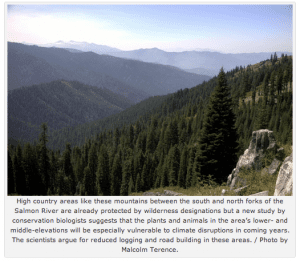Mid and low elevation sites may buffer from climate change
The shifts in global climate could endanger many species of plants and animals over coming decades and a new paper by conservation biologists say the Klamath-Siskiyou region is among the most important half-dozen such regions in the world for protecting these species from extinction. The authors, who include Reed Noss, Professor of Conservation Biology at the University of Central Florida, note that many high elevation areas are already protected by wilderness designations.
These areas have been heavily fragmented and otherwise altered by more than a century of logging, mining, livestock grazing, dams and ill-considered patterns of fire management.
“Climate change, combined with habitat loss and fragmentation, is the greatest threat we face to nature,” Noss said. “This study shows that land managers can reduce impacts of climate change by protecting older forests in a region whose biological diversity has been recognized globally as among the top 10 coniferous forests on earth.”
Read more about the study here.

